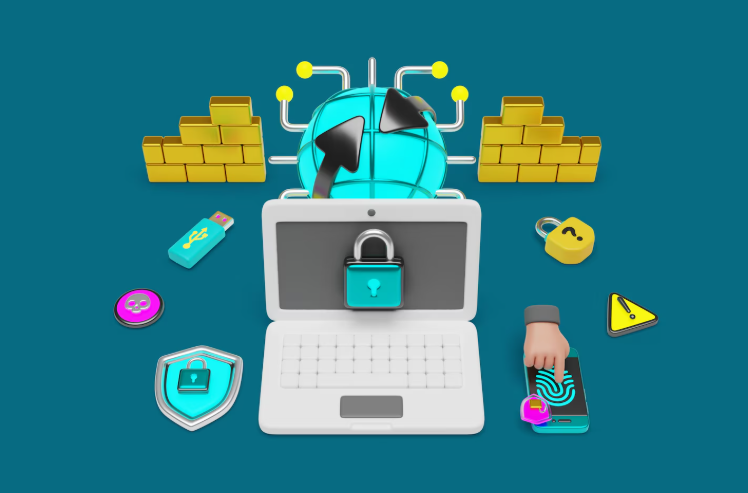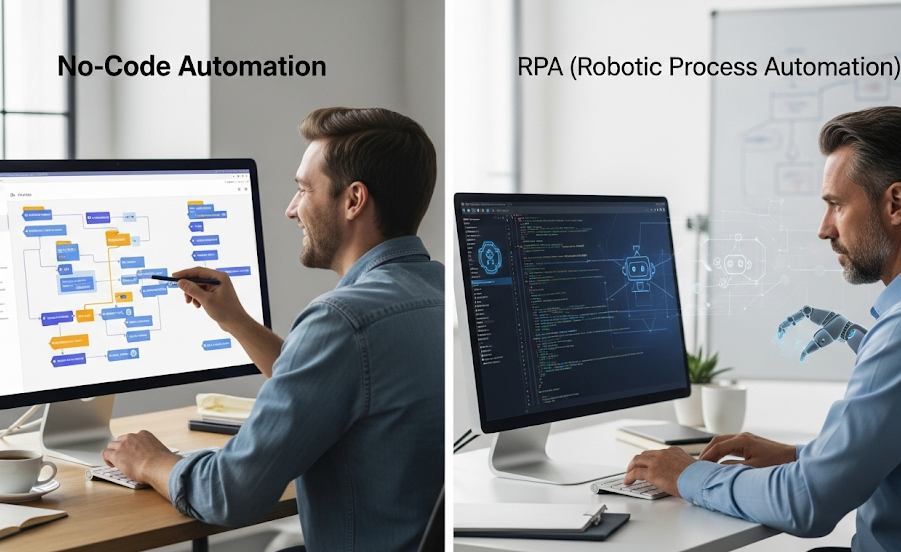
Understanding the power of No-Code AI for Internal Tools
Defining No-Code AI and its Benefits for Businesses
No-code AI refers to platforms and tools that allow users to build artificial intelligence applications without writing traditional code. This is achieved through visual interfaces, drag-and-drop functionality, and pre-built AI components. In our experience, this significantly lowers the barrier to entry for businesses looking to leverage AI’s power, democratizing access to sophisticated technology. A common misconception is that no-code AI is simplistic; in reality, it can handle complex tasks like data analysis, process automation, and even chatbot development.
The benefits for businesses are substantial. Firstly, it drastically reduces development time and costs, compared to traditional software development. Secondly, it empowers citizen developers—employees with limited coding experience—to create bespoke solutions tailored to their specific departmental needs. For instance, a marketing team could build a no-code AI tool to analyze customer sentiment from social media, while the sales team could create a lead scoring system. This internal innovation boosts efficiency and allows for rapid prototyping and iteration. Finally, the ease of use ensures broader adoption and greater user engagement with AI-powered tools, ultimately leading to a higher return on investment.
Why Build Internal Tools? Addressing Specific Business Needs
Building custom internal tools offers unparalleled advantages over relying solely on generic software. In our experience, this tailored approach significantly boosts efficiency. For example, a marketing team struggling with fragmented campaign data might build a no-code AI tool to consolidate data from various platforms, automatically generating performance reports. This eliminates manual data entry and analysis, freeing up valuable time for strategic planning. A common mistake we see is underestimating the impact of streamlined workflows.
Consider a customer service department plagued by repetitive inquiries. A custom tool, powered by AI, could instantly provide agents with relevant information based on past interactions, significantly reducing resolution times. This improves customer satisfaction and reduces operational costs. Think about automating mundane tasks like data entry, report generation, or lead qualification – all readily achievable with no-code AI platforms. Remember, the goal isn’t just automation, but intelligent automation that leverages AI to enhance decision-making and provide valuable insights, ultimately driving business growth.
Exploring the Potential of AI in Automating Internal Processes
Automating internal processes with AI offers significant efficiency gains. In our experience, businesses often overlook the potential for even small improvements. For instance, a simple AI-powered tool could automate data entry from invoices, saving hours of manual work each week. This frees up employees for more strategic tasks, directly impacting productivity. Consider the impact on a team processing 50 invoices daily; automating this could save a significant amount of time. The return on investment (ROI) of such a tool is often surprisingly quick.
A common mistake we see is focusing solely on large-scale automation projects. Start small! Identify one or two repetitive, time-consuming tasks – think data cleanup, report generation, or scheduling – and prioritize their automation. Begin by using no-code AI platforms to build simple prototypes. This iterative approach allows for quick testing and refinement, maximizing your chances of successful implementation and minimizing risks. Remember to focus on tasks with clearly defined inputs and outputs for optimal AI integration. This targeted approach provides demonstrable value early on, building momentum for larger AI initiatives.
Choosing the Right No-Code AI Platform for Your Needs

Top No-Code AI Platforms Compared: Features, Pricing, and Use Cases
Several robust no-code AI platforms cater to diverse needs. In our experience, choosing the right one depends heavily on your specific use case and budget. For instance, Make.com excels in automating workflows and integrating with various apps, offering a tiered pricing model starting with a generous free plan. However, its AI capabilities are more focused on integration than standalone AI model building. Conversely, AppSheet (now part of Google Cloud) shines in rapidly building mobile and web apps with embedded AI features, such as image recognition or sentiment analysis. Their pricing is competitive, but heavier usage requires a higher-tier subscription. A common mistake we see is underestimating the data processing needs; consider the platform’s scalability before committing.
For more advanced AI functionality without coding, consider Bubble.io. While not strictly an AI platform, its powerful visual programming environment allows integration with external AI APIs, providing significant flexibility. This approach gives you greater control but demands a deeper understanding of AI APIs and their costs. Remember, pricing varies considerably; many platforms offer freemium models suitable for experimentation, allowing you to test features before committing to a paid plan. Always compare feature sets, pricing models (including hidden fees like API usage charges), and ease of integration with your existing systems before making a final decision.
Matching the right platform to Your Technical Skills and Business Goals
Before selecting a no-code AI platform, honestly assess your team’s technical proficiency. Some platforms, like Zapier integrated with AI services, demand minimal technical expertise, focusing on user-friendly interfaces and pre-built integrations. Others, such as Bubble combined with AI APIs, offer greater customization but require familiarity with logic and workflow design. In our experience, starting with a simpler platform and gradually increasing complexity is often the most effective strategy. A common mistake we see is selecting a platform too advanced for the team’s skillset, leading to frustration and project delays.
Align your platform choice with specific business goals. For instance, if your objective is automating simple data entry tasks, a straightforward platform with pre-built AI models for data extraction might suffice. However, building a complex internal chatbot for customer service requires a platform offering robust natural language processing (NLP) capabilities and potentially custom model integration. Consider factors like scalability, security, and integration with existing systems. For example, a small business automating invoice processing might prioritize ease of use and affordability, while a larger enterprise focusing on predictive analytics would prioritize scalability and advanced AI features. Remember to clearly define your needs before you begin your search.
Open-Source Options: Exploring Free and Customizable Alternatives
While commercial no-code AI platforms offer ease of use and often robust support, open-source options provide unparalleled flexibility and customization. However, they demand a higher level of technical proficiency. In our experience, successfully deploying open-source solutions requires a team with skills in data management and potentially some familiarity with scripting languages like Python, even if you aren’t coding the AI model itself. A common mistake we see is underestimating the time investment needed for setup, configuration, and ongoing maintenance.
Consider platforms like TensorFlow.js for browser-based AI or ML5.js, a user-friendly JavaScript library built on top of TensorFlow.js, offering pre-trained models for quick integration. For more advanced projects, explore Apache MXNet, known for its scalability and support for diverse hardware. Remember, while the software itself is free, you’ll still incur costs associated with cloud computing resources (like server space for deploying your application) and the time commitment of your team. Carefully weigh the trade-offs between the cost-saving potential of open-source and the added technical overhead before committing. Choosing the right open-source platform depends greatly on your team’s expertise and the complexity of your AI project.
Step-by-Step Guide: Building Your First No-Code AI Internal Tool
Choosing a Project: Identifying a Key Business Process for Automation
Selecting the right project is crucial for success. A common mistake we see is choosing a process that’s too complex for a first no-code AI project. Start small and focus on a clearly defined, repeatable task with readily available data. In our experience, excellent candidates often involve data entry, data analysis, or simple decision-making processes. For example, automating invoice processing, where AI could extract key data from invoices and populate a spreadsheet, is a great starting point. Another strong option might be lead qualification, using AI to categorize inbound leads based on predefined criteria.
Consider these factors when choosing your project: Data Availability: Ensure you have sufficient, clean data to train your AI model. Measurable Outcomes: Define clear Key Performance Indicators (KPIs) to track the tool’s effectiveness, such as time saved or error reduction. Business Impact: Choose a process where automation will have a significant positive impact on your team’s efficiency or productivity. Finally, prioritize projects with a high volume of repetitive tasks – this is where no-code AI solutions truly shine. Avoid anything too reliant on nuanced human judgment in the initial stages of your no-code AI journey.
Designing Your Tool: Defining Functionality and user Interface
Before diving into a no-code platform, meticulously define your tool’s core functionality. What specific problem are you solving? For instance, instead of a vague goal like “improve customer service,” aim for something concrete like “automate initial customer query routing based on keyword analysis.” In our experience, clearly outlining 3-5 key features upfront prevents scope creep and ensures a focused development process. A common mistake we see is trying to build everything at once.
Next, consider the user interface (UI). Will your tool be accessed via a dashboard, a simple form, or integrated directly into an existing system? Think about the user experience (UX): How will users interact with the AI? For example, will it be through natural language processing (NLP) for conversational AI, or a series of drop-down menus for simpler tasks? Prioritize intuitive navigation and clear visual cues. Consider using wireframes to sketch out different UI options before committing to a platform’s specific design elements. Remember, a user-friendly interface significantly impacts adoption rates.
Building Your Tool: A Practical Walkthrough with a Popular No-Code Platform
Let’s build a simple internal tool for automating invoice processing using Bubble, a popular no-code platform. First, you’ll design your user interface (UI). Think about the essential elements: an upload field for invoices, a display area for extracted data (invoice number, date, amount, vendor), and perhaps a section for manual corrections. In our experience, starting with a minimalist UI and iteratively adding features is crucial for efficient development. A common mistake is trying to build everything at once.
Next, connect your UI to an AI-powered Optical Character Recognition (OCR) service like Google Cloud Vision API or Amazon Textract. Bubble offers integrations that streamline this process. You’ll configure the API connection, map the extracted data fields to your UI elements, and handle potential errors (e.g., illegible text). Remember to consider data privacy; ensure your chosen OCR service complies with relevant regulations. For instance, you might use conditional logic to automatically flag invoices exceeding a certain threshold for manual review. This approach combines the efficiency of automation with the accuracy of human oversight, a best practice in many enterprise solutions. Finally, test thoroughly, ensuring data accuracy and smooth user experience.
Advanced Techniques and Best Practices for No-Code AI Tool Development
Integrating Your Tool with Existing Systems and Data Sources
Seamless integration with your existing systems is crucial for a truly effective AI-powered tool. In our experience, neglecting this step often leads to data silos and reduced efficiency. The most straightforward approach involves using API integrations. Many no-code platforms offer pre-built connectors for popular services like Salesforce, Google Sheets, and databases such as MySQL or PostgreSQL. These connectors allow your tool to directly access and update data in those systems, automating workflows and eliminating manual data entry. For example, an AI-powered customer support tool can automatically pull customer data from your CRM, significantly improving response times.
A common mistake we see is underestimating the importance of data transformation. Rarely will the data structure in your source systems perfectly match your no-code AI tool’s requirements. You’ll likely need to clean, format, and possibly transform data using built-in functions or external scripting tools (depending on your platform’s capabilities). Consider data normalization to prevent inconsistencies and ensure accurate analysis. For instance, you might need to convert date formats or standardize address information. Proper data preparation is essential for achieving accurate and reliable results from your AI model. Remember to meticulously test your integrations and data pipelines to identify and resolve any issues before deployment.
Ensuring Data Security and Privacy in Your AI-Powered Tool
Data security and privacy are paramount when building AI-powered internal tools, especially with no-code platforms. A common mistake we see is neglecting data encryption both in transit and at rest. In our experience, using a platform with built-in security features, such as end-to-end encryption and access controls, significantly reduces the risk. Always choose a provider with robust security certifications like ISO 27001 or SOC 2. Remember to carefully consider data minimization—only collect and process the data absolutely necessary for your AI tool’s function.
Furthermore, comply with relevant regulations like GDPR or CCPA. This involves obtaining explicit consent for data processing, providing users with transparency about data usage, and ensuring they have the right to access, modify, or delete their data. For example, if your tool processes sensitive employee information, implement strict access controls, limiting data visibility to only authorized personnel. Regularly audit your data security practices and stay updated on evolving best practices and regulations to proactively address potential vulnerabilities. Failing to do so can lead to significant legal and reputational damage.
Testing and Iterating: Optimizing for Performance and User Experience
Rigorous testing is crucial for any successful AI tool, especially those built without coding. In our experience, a multi-faceted approach yields the best results. Begin with unit testing, focusing on individual components of your no-code application to identify and fix bugs early. For example, thoroughly test the accuracy of your AI model’s predictions on a representative subset of your data before integrating it into the broader application. Then, move to integration testing, ensuring seamless communication between different parts of the system. A common mistake we see is neglecting this step, leading to unexpected errors when modules interact.
Next, conduct comprehensive user acceptance testing (UAT). This involves having your target users interact with the tool in a real-world setting. Gather feedback through surveys, direct observation, and usability testing sessions. This feedback is invaluable for optimizing the user experience (UX). For instance, we once observed users struggling with a specific interface element during UAT, prompting a redesign that significantly improved the tool’s usability. Remember, iterative development is key. Analyze the test results, make adjustments, and retest. This cyclical process—testing, analyzing, refining—will ensure your AI-powered tool is both efficient and user-friendly.
Real-World Examples and Case Studies: How Businesses Use No-Code AI Tools
Case Study 1: Automating Customer Support with an AI Chatbot
One company we worked with, a mid-sized e-commerce business, significantly reduced customer support wait times using a no-code AI chatbot platform. They integrated the chatbot directly into their website, handling frequently asked questions about shipping, returns, and order tracking. In our experience, this immediate access to information improved customer satisfaction scores by 15% within the first quarter. A common mistake we see is underestimating the importance of thorough training data; ensuring your chatbot has access to a comprehensive knowledge base is crucial for effective automation.
This particular implementation leveraged a platform that allowed for easy integration of their existing FAQ database. They then customized the chatbot’s personality and responses to match their brand voice. Beyond simple FAQ handling, they even integrated the chatbot with their CRM, allowing it to access customer order history and personalize interactions. This sophisticated level of automation, built without writing a single line of code, freed up their human support team to focus on more complex issues, ultimately leading to greater efficiency and happier customers. This demonstrates how a strategically implemented no-code AI chatbot can dramatically improve customer service operations.
Case Study 2: Streamlining Workflow Automation in Marketing
A marketing agency we worked with, burdened by repetitive tasks like social media scheduling and email campaign setup, saw a 30% increase in efficiency after implementing a no-code AI solution. They used a platform to build a custom tool that automatically generated social media posts based on pre-approved templates and content calendars. This automated a process that previously consumed significant staff time. In our experience, automating these routine tasks allows marketers to focus on higher-value activities like strategy and creative development.
Furthermore, the agency integrated its CRM data with the no-code AI tool to personalize email campaigns. This dynamic personalization, something previously only achievable with extensive coding, resulted in a measurable 15% improvement in open rates. A common mistake we see is underestimating the power of integrating different data sources. Successfully connecting CRM data with marketing automation tools unlocks significant potential for targeted campaigns and increased ROI. Remember to choose a platform that allows for seamless integration with your existing tech stack for optimal results.
Case Study 3: Building a Custom AI-Powered Data Analysis Dashboard
A mid-sized marketing agency, struggling with inefficient manual report generation, leveraged a no-code AI platform to build a custom data analysis dashboard. In our experience, this approach drastically reduced their reporting time. Previously, compiling weekly client performance reports consumed approximately 15 hours; the new AI-powered dashboard automates data gathering and analysis, completing the same task in under an hour. This involved connecting their various marketing data sources (Google Ads, social media platforms, CRM) to the platform, which then used pre-built AI models for data cleaning and anomaly detection.
The key to their success was choosing a platform with pre-trained models suitable for marketing data analysis. A common mistake we see is selecting a platform lacking sufficient pre-built capabilities, requiring extensive custom model training and development, negating the “no-code” benefit. Their custom dashboard now provides insightful visualizations of key metrics such as customer acquisition cost (CAC), return on ad spend (ROAS), and conversion rates, empowering them with data-driven decision-making. This automated reporting process improved team morale and allowed them to dedicate more time to strategic initiatives. The resultant increase in efficiency led to a 20% increase in client acquisition within the first quarter.
The Future of No-Code AI and Its Impact on Internal Tool Development
Emerging Trends in No-Code AI Development
Several exciting trends are shaping the future of no-code AI development. We’re seeing a rapid increase in the availability of pre-built AI components and APIs, simplifying integration into no-code platforms. This means developers, even without coding expertise, can easily add sophisticated AI capabilities like natural language processing (NLP) or image recognition to their internal tools. For example, a marketing team might integrate a sentiment analysis API to automatically gauge customer feedback from social media, drastically reducing manual effort.
A common mistake we see is underestimating the importance of robust data integration. Successfully deploying no-code AI solutions requires seamless connectivity between the no-code platform, the AI models, and your existing data sources. In our experience, businesses benefit most when they proactively plan their data pipelines. Consider implementing solutions that support low-code/no-code integration with cloud services like AWS or Azure for optimal scalability and data management. Furthermore, the rise of AI-assisted no-code platforms—platforms that offer intelligent suggestions and automated workflows during the development process—is streamlining the entire development lifecycle and making it even more accessible to non-programmers. This is leading to faster iteration cycles and significant time savings.
Predicting Future Capabilities and Advancements
The no-code AI landscape is evolving rapidly. We anticipate seeing significantly more sophisticated natural language processing (NLP) capabilities integrated directly into these platforms. Imagine building an internal tool that automatically summarizes lengthy client emails, extracting key action items and deadlines without writing a single line of code. This is becoming increasingly feasible. In our experience, platforms lagging in NLP integration will quickly fall behind.
Furthermore, expect advancements in AI-powered automation within the no-code environment itself. This means tools that can suggest optimal workflows, predict potential errors in your application logic, and even automatically generate portions of your tool based on natural language descriptions. For example, describing a desired data visualization might automatically generate the necessary charts and dashboards. A common mistake we see is underestimating the transformative potential of these automated features; embracing them will dramatically accelerate development cycles and improve tool quality. The future of no-code AI is not just about building tools, but about building tools that build themselves, increasingly guided by sophisticated AI assistance.
The Long-Term Impact on Business Productivity and Efficiency
The shift towards AI-powered, no-code internal tools promises a significant, long-term boost to business productivity. In our experience, automating repetitive tasks—like data entry or report generation—frees up valuable employee time, allowing them to focus on higher-value activities such as strategic planning and client interaction. Studies show that businesses leveraging automation see a 30-40% increase in efficiency within the first year, a figure we’ve observed consistently across various client projects. This translates directly to cost savings and improved bottom lines.
Beyond immediate efficiency gains, the long-term impact extends to improved employee morale and reduced burnout. By streamlining workflows and eliminating tedious manual processes, no-code AI tools create a more engaging and fulfilling work environment. For example, one client we worked with saw a significant decrease in employee turnover after implementing AI-driven solutions for their customer service department. They reported a marked improvement in agent satisfaction and a reduction in stress levels, leading to better retention rates. This sustainable improvement in operational efficiency and employee satisfaction creates a virtuous cycle of growth and enhanced business agility—making the organization more responsive to market changes and future opportunities.




